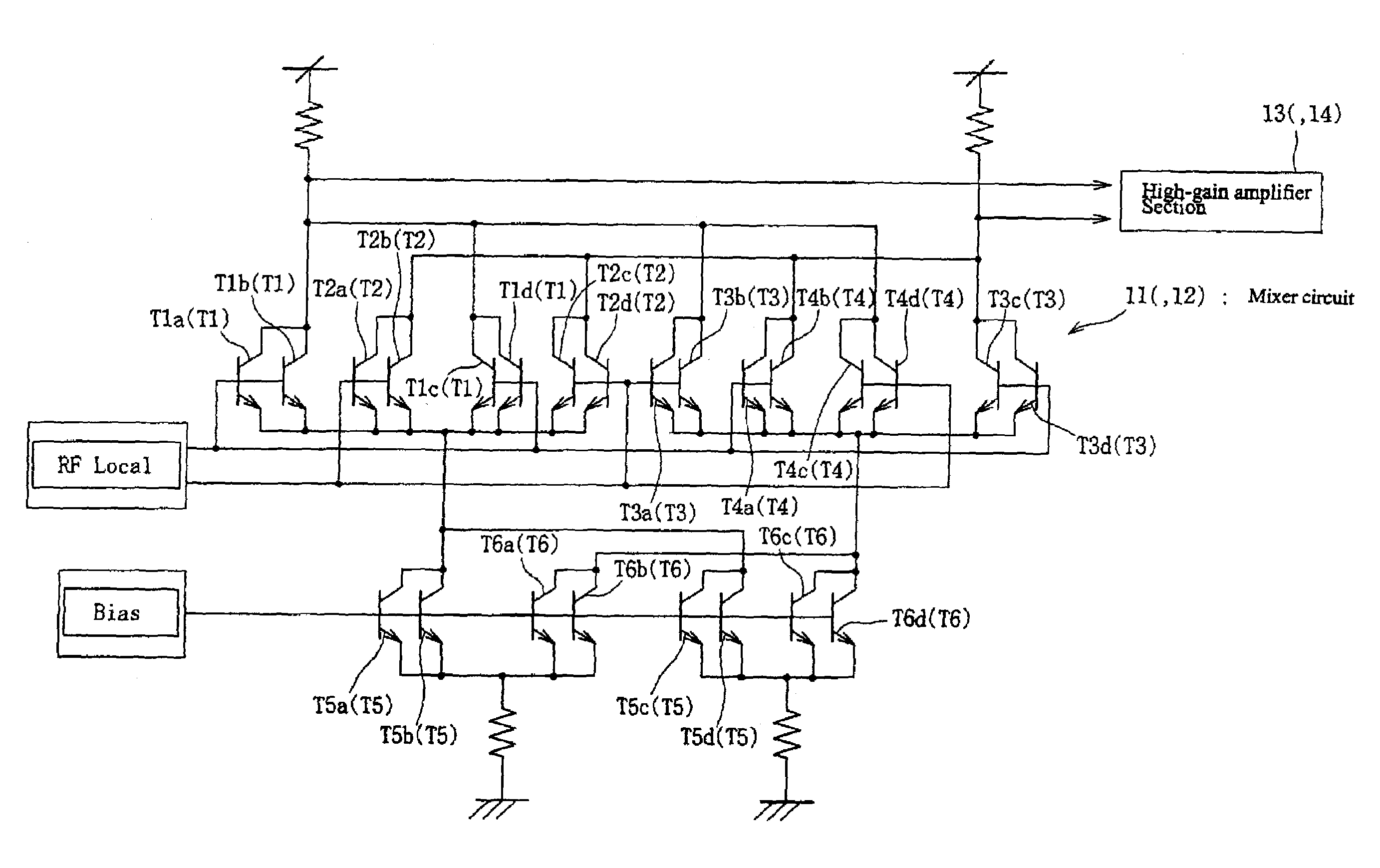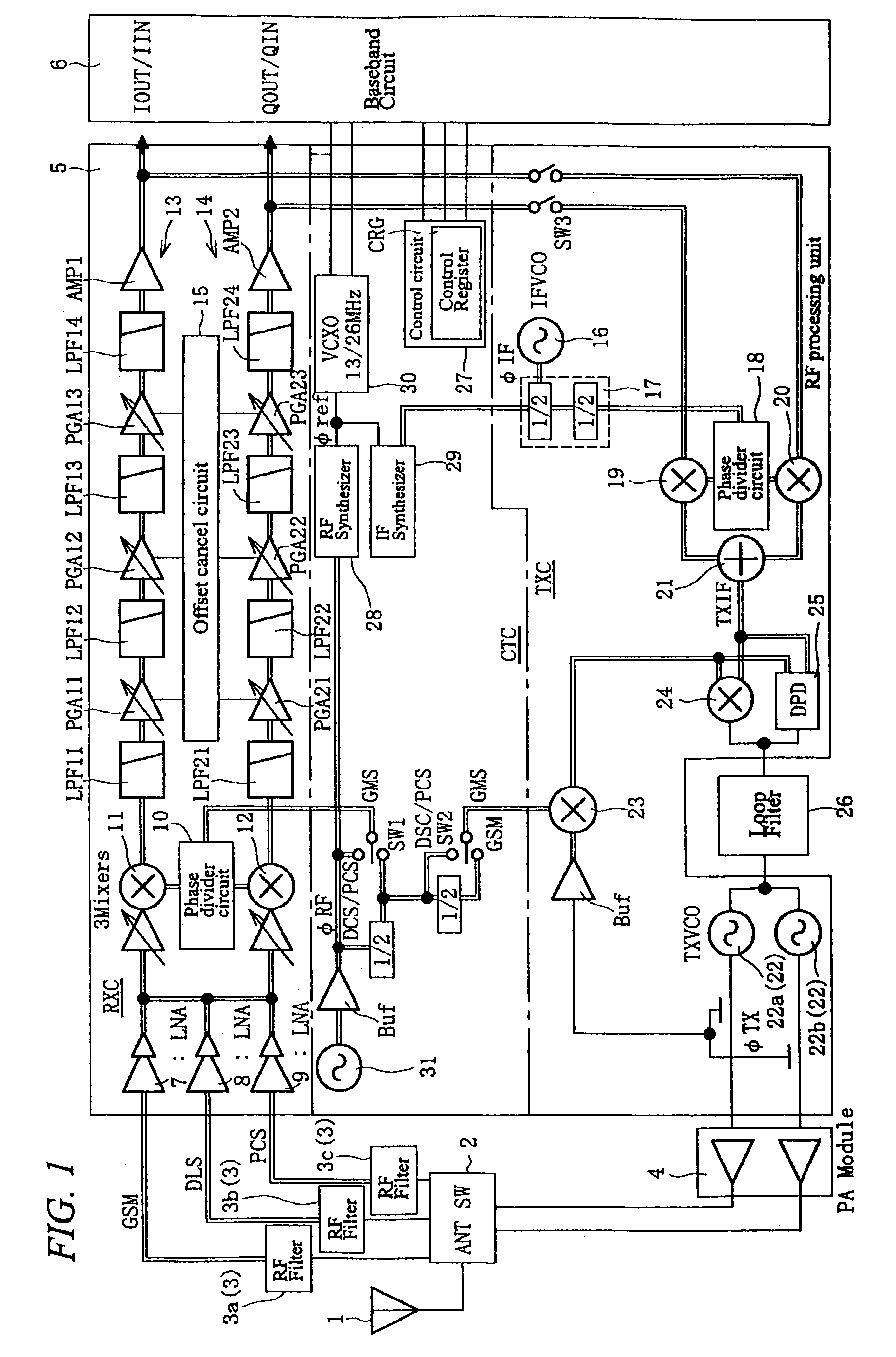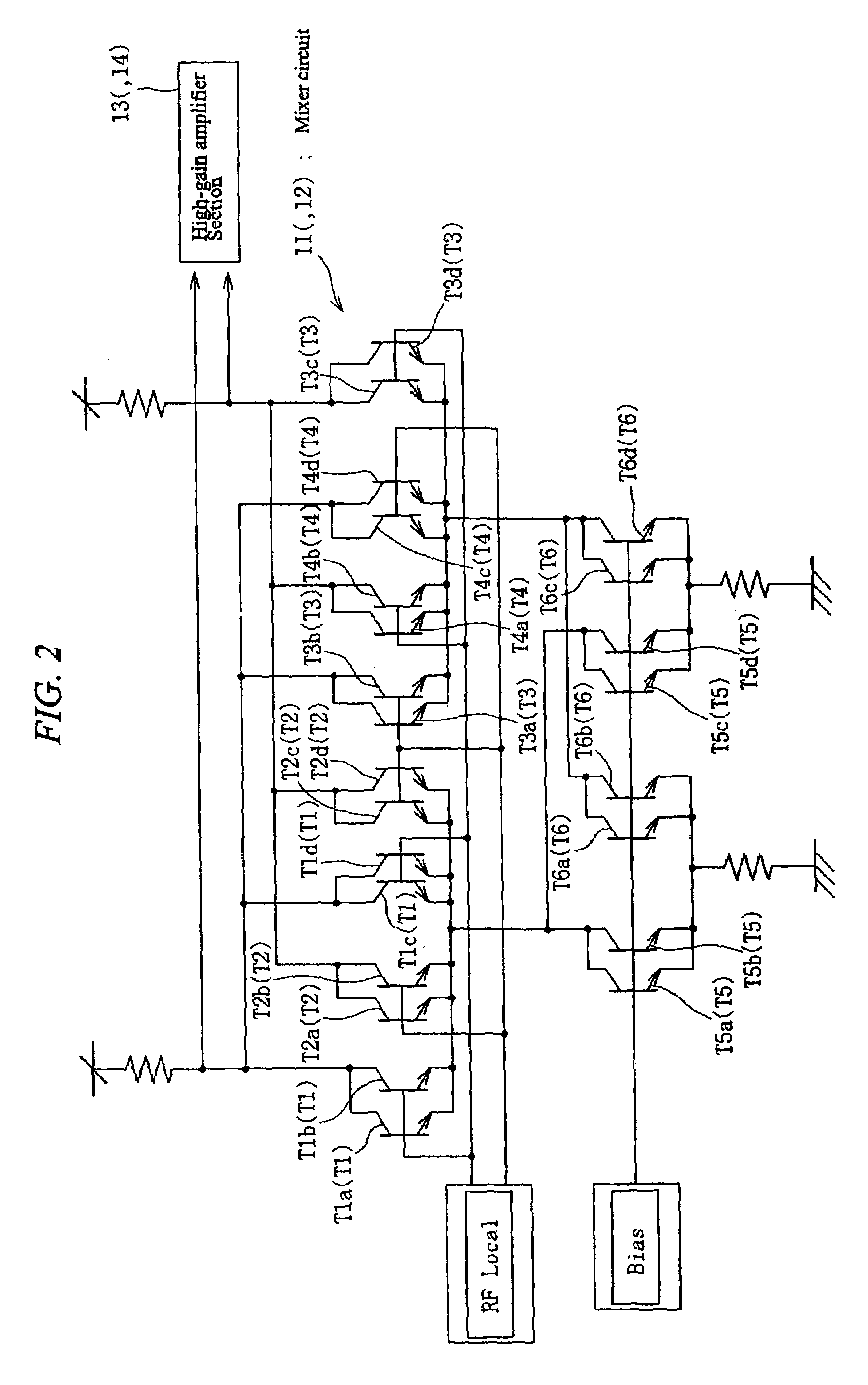Semiconductor integrated circuit device
a technology of integrated circuits and semiconductors, applied in solid-state devices, transmission, electromagnetic wave demodulation, etc., can solve the problems of deteriorating receiving sensitivity, affecting the self-heating influence of transistors around them, etc., to reduce thermal interference, improve the receiving sensitivity to signals, and prevent dc offset
- Summary
- Abstract
- Description
- Claims
- Application Information
AI Technical Summary
Benefits of technology
Problems solved by technology
Method used
Image
Examples
Embodiment Construction
[0030]Hereinafter, embodiments of the present invention will be described in detail based on the drawings.
[0031]FIG. 1 is a block diagram of a mobile communication system according to an embodiment of the present invention; FIG. 2 is an equivalent circuit diagram of a mixer section provided in the mobile communication system in FIG. 1; FIG. 3 is an image layout diagram of upper-stage transistors, each of which constitutes a gilbert bell circuit in the mixer section in FIG. 2; FIG. 4 is an image layout diagram of lower-stage transistors, each of which constitutes a gilbert cell circuit in the mixer section in FIG. 2; FIG. 5 is a chip layout diagram of the upper-stage transistors, each of which constitutes the gilbert cell circuit in FIG. 3; FIG. 6 is a chip layout diagram showing an example of the transistors multiple-laid out in FIG. 3; FIG. 7 is a layout diagram of a semiconductor chip on which the transistors in FIG. 4 are provided; FIG. 8 is an explanatory diagram showing a layou...
PUM
 Login to View More
Login to View More Abstract
Description
Claims
Application Information
 Login to View More
Login to View More - R&D
- Intellectual Property
- Life Sciences
- Materials
- Tech Scout
- Unparalleled Data Quality
- Higher Quality Content
- 60% Fewer Hallucinations
Browse by: Latest US Patents, China's latest patents, Technical Efficacy Thesaurus, Application Domain, Technology Topic, Popular Technical Reports.
© 2025 PatSnap. All rights reserved.Legal|Privacy policy|Modern Slavery Act Transparency Statement|Sitemap|About US| Contact US: help@patsnap.com



